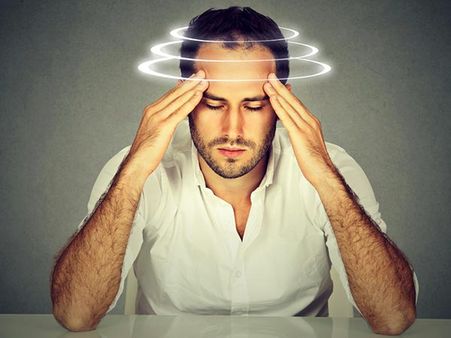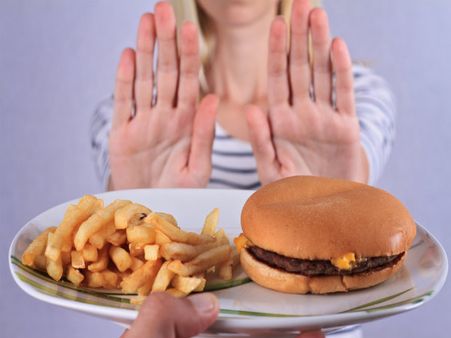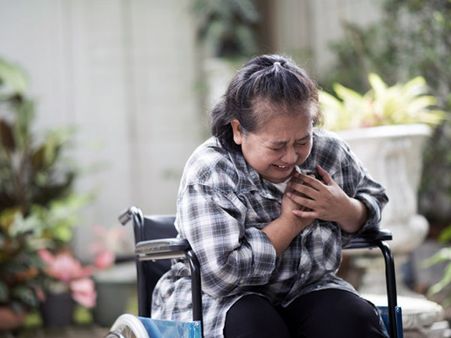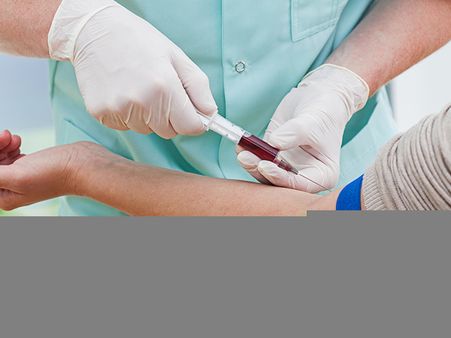Just In
- 4 hrs ago

- 10 hrs ago

- 14 hrs ago

- 21 hrs ago

Don't Miss
- Finance
 Tesla Forms Semiconductor Pact With Tata Electronics For Global Expansion
Tesla Forms Semiconductor Pact With Tata Electronics For Global Expansion - News
 BRS Leader K Kavitha Sent To Judicial Custody Till April 23
BRS Leader K Kavitha Sent To Judicial Custody Till April 23 - Movies
 Crew Box Office Collection Day 17: Tabu, Kareena, Kriti's Heist-Comedy Continues To Remain Steady
Crew Box Office Collection Day 17: Tabu, Kareena, Kriti's Heist-Comedy Continues To Remain Steady - Technology
 Realme P1 Series Launching in India at 12 noon Today: What to Expect? How to Watch the Livestream?
Realme P1 Series Launching in India at 12 noon Today: What to Expect? How to Watch the Livestream? - Sports
 IPL 2024 MI vs CSK: Sunil Gavaskar Slams Hardik Pandya For His Benefit Match Like Bowling To MS Dhoni
IPL 2024 MI vs CSK: Sunil Gavaskar Slams Hardik Pandya For His Benefit Match Like Bowling To MS Dhoni - Automobiles
 2024 Maruti Suzuki Swift To Be Launched On May 9: New Engine, Platform & Much More
2024 Maruti Suzuki Swift To Be Launched On May 9: New Engine, Platform & Much More - Education
 10 Reasons Gen Z Should Be Grateful to Dr. B.R. Ambedkar
10 Reasons Gen Z Should Be Grateful to Dr. B.R. Ambedkar - Travel
Maximise Your First Indian Adventure With These Travel Tips
Stroke: Causes, Symptoms, Diagnosis And Treatment
Stroke is ranked as the second leading cause of death and the third leading cause of disability worldwide, as per the World Health Organization. It is estimated that 70 per cent of stroke and 87 per cent of deaths caused by stroke and disability-adjusted life years are prevalent in low and middle-income countries [1].
Stroke occurs when a blood vessel in the brain bursts and bleeds or when there is a reduction of blood supply to a part of your brain, which prevents the brain tissues from receiving oxygen. This causes damage to the brain cells and tissues and they begin to die in minutes.

Causes Of Stroke [2]
The cause of a stroke depends on the type of stroke, which are ischemic stroke, hemorrhagic and transient ischemic attack (TIA).
- Ischemic stroke - This is the most common type of stroke. It occurs when the arteries supplying blood to the brain is interrupted or blocked, due to the build of plaque or blood clots in the arteries. According to the Centers for Disease Control and Prevention (CDC), 87 per cent of strokes are ischemic stroke.
- Hemorrhagic stroke - This type of stroke happens when an artery breaks open or leaks causing blood leakage which creates excess pressure in the brain cells and tissues eventually damaging them. Medical conditions that cause hemorrhagic stroke include aneurysms (the enlargement of a weakened artery), high blood pressure, trauma and overtreatment with blood thinners.
- Transient ischemic attack (TIA) - A transient ischemic attack (TIA) also known as mini-stroke occurs when the blood flow to the brain is temporarily blocked, usually not more than 5 minutes. This type of stroke is a warning sign of a future stroke. Most often, blood clots cause transient ischemic attack (TIA).
COVID-19: Coronavirus Causing Strokes In Young & Middle-aged People With Mild Symptoms

Symptoms Of Stroke
•
Paralysis
•
Confusion
•
Slurred
speech
•
Numbness
or
weakness
in
the
arm,
face
and
leg.
•
Trouble
in
speaking
•
Trouble
in
walking
•
Vision
problems
•
Dizziness
•
Loss
of
balance
or
coordination
•
Severe,
sudden
headache
[3]

Stroke In Men
According to the CDC, stroke is the fifth leading cause of death in men. It is also the leading cause of disability that mostly affects younger men aged below 44 as compared to women. The symptoms of stroke in men include slurred speech, muscle weakness and drooping on one side of the face [4].

Stroke In Women
Stroke is the fourth leading cause of death in women according to the CDC. The symptoms include pain, hallucination, general weakness, nausea or vomiting, seizures, fainting, shortness of breath, confusion and sudden changes in behaviour [5].

Risk Factors Of Stroke
•
Family
history
•
Sex
•
Age
•
Race
and
ethnicity
•
Lack
of
exercise
•
Unhealthy
diet
high
in
salt,
saturated
fat,
trans
fat
and
cholesterol
•
Excess
alcohol
consumption
•
Tobacco
use
[6]
Some health conditions can also increase the risk of stroke, which include high blood pressure, high cholesterol, heart disorders, heart valve defects, sickle cell disease and diabetes.

Complications Of Stroke
•
Paralysis
•
Loss
of
memory
•
Difficulty
in
talking
or
swallowing
•
Pain
•
Emotional
problems
•
Behavioural
changes

Diagnosis Of Stroke
The doctor will first physically examine you and ask about your medical history, symptoms and what medications you take. Then a number of tests will be conducted which include the following:
• Blood tests - It is done to help check your blood sugar levels, how fast your blood clots if you have an infection and your platelet levels.
• MRI and CT scan - MRI scan can help detect damaged brain tissues and cells. A CT scan, on the other hand, will show a clear picture of the brain that shows any bleeding in the brain.
• Echocardiogram - This test can help detect clots in the heart that may have travelled to the brain and cause a stroke.
• Carotid ultrasound - This test shows the build-up of fatty deposits (plaque) and the supply of blood in the carotid arteries.
• Cerebral angiogram - This test shows whether there are any blocked arteries in the brain and neck.

Treatment Of Stroke
The treatment depends on the type of stroke, which includes the following:
Ischemic stroke and transient ischemic attack (TIA) stroke
- Anticoagulant drugs and anti-platelet drugs - They are given within 24 to 48 hours after the onset of stroke symptoms.
- Thrombolytic drugs - They are given to dissolve the blood clots in the arteries to lower brain damage.
- Angioplasty and stents - In angioplasty, the doctor threads a catheter into the carotid arteries through an artery in your groin and a balloon is filled to widen the narrow artery. After which a stent is inserted to support the opened artery.
- Mechanical thrombectomy - The doctor inserts a catheter into a large artery inside your head and then a device is used to pull the blood clot out of the artery.
In rare cases, if these treatments don't work the doctor may perform a surgery to remove the blood clot or fatty deposits from the arteries.
Hemorrhagic stroke
• Clamping - The doctor may find out that an aneurysm hasn't started bleeding yet or has stopped bleeding. To prevent bleeding, the doctor will insert a tiny clamp at the base of an aneurysm.
• Coiling - With the help of a catheter, a coil-like device is inserted into a weakened artery to block the blood flow in the area that is bleeding.
• Stereotactic radiosurgery - This treatment procedure is used to repair the malformations of the artery.
• Surgery - Surgery is done to clip an aneurysm that has burst to prevent additional bleeding.

Prevention Of Stroke
•
Maintain
a
healthy
weight
•
Stay
physically
active
•
Eat
fruits
and
vegetables,
foods
low
in
saturated
and
trans
fat
•
Consume
alcohol
in
moderation
•
Quit
smoking
•
Manage
diabetes
•
Control
high
blood
pressure
Stroke Recovery
After the treatment of stroke, the patient will be closely monitored and then the recovery process will start to help the patient recover.
A
speech
therapist,
cognitive
therapist,
physical
therapist,
dietitian,
neurologist,
psychologist
or
psychiatrist
are
usually
recommended
for
people
who
are
recovering
from
a
stroke.
-
 wellnessIs Your Workout Routine A Silent Stroke Trigger? Find Out Here!
wellnessIs Your Workout Routine A Silent Stroke Trigger? Find Out Here! -
 wellnessDelhi Man Suffered From 100 Mini Strokes In A Week: Why Does A Person Get So Many Strokes? What Triggered It?
wellnessDelhi Man Suffered From 100 Mini Strokes In A Week: Why Does A Person Get So Many Strokes? What Triggered It? -
 healthReducing Stroke Risk in India: The Role of Daily Walking
healthReducing Stroke Risk in India: The Role of Daily Walking -
 healthIf You Don't Eat These Foods Then Your Brain Health Will Not Improve
healthIf You Don't Eat These Foods Then Your Brain Health Will Not Improve -
 healthHeart Health: Which Exercise Is Best To Reduce Stroke Risk?
healthHeart Health: Which Exercise Is Best To Reduce Stroke Risk? -
 healthHow To Manage Stress And High Blood Pressure In The First Place
healthHow To Manage Stress And High Blood Pressure In The First Place -
 healthHeart Health: Are There Warning Signs Just Before A Stroke?
healthHeart Health: Are There Warning Signs Just Before A Stroke? -
 healthAre Millennials At Increased Risk Of Stroke Death Compared To Gen Xers?
healthAre Millennials At Increased Risk Of Stroke Death Compared To Gen Xers? -
 disorders cureWarning Stroke (Transient Ischemic Attack): Why Is It Important To Get Immediate Medical Care?
disorders cureWarning Stroke (Transient Ischemic Attack): Why Is It Important To Get Immediate Medical Care? -
 basicsWomen Are At Greater Risk Of Stroke, The More Miscarriages Or Stillbirths They’ve Had
basicsWomen Are At Greater Risk Of Stroke, The More Miscarriages Or Stillbirths They’ve Had -
 disorders cure14 Health Conditions That Can Change One's Personality Dramatically
disorders cure14 Health Conditions That Can Change One's Personality Dramatically -
 wellnessLong Work Hours Increasing Deaths From Heart Disease, Pandemic Work From Home Could Worsen It
wellnessLong Work Hours Increasing Deaths From Heart Disease, Pandemic Work From Home Could Worsen It


 Click it and Unblock the Notifications
Click it and Unblock the Notifications


